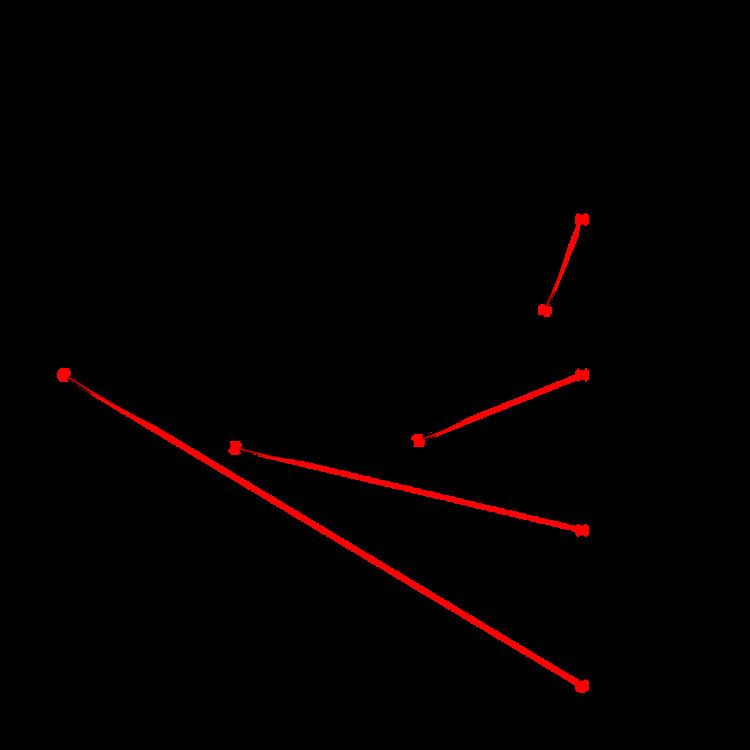 | ||
In geometry, a radiodrome is the pursuit curve followed by a point that is pursuing another linearly-moving point. The term is derived from the Greek words "ῥάδιος" (easier) and "δρόμος" (running). The classic (and best-known) form of a radiodrome is known as the "dog curve"; this is the path a dog follows when it swims across a stream with a current after food it has spotted on the other side. Because the dog drifts downwards with the current, it will have to change its heading; it will also have to swim further than if it had computed the optimal heading. This case was described by Pierre Bouguer in 1732.
A radiodrome may alternatively be described as the path a dog follows when chasing a hare, assuming that the hare runs in a straight line at a constant velocity. It is illustrated by the following figure:
Mathematical analysis
Introduce a coordinate system with origin at the position of the dog at time zero and with y-axis in the direction the hare is running with the constant speed
The dog runs with the constant speed
The differential equation corresponding to the movement of the dog, (x(t), y(t)), is consequently
It is possible to obtain a closed-form analytic expression y=f(x) for the motion of the dog, From (2) and (3) it follows that
Multiplying both sides with
one gets
or
From this relation it follows that
where B is the constant of integration determined by the initial value of y' at time zero, y' (0)= sinh(B − (Vt /Vd) lnAx), i.e.,
From (8) and (9) it follows after some computations that
If, now, Vt ≠ Vd, this relation integrates to
where C is the constant of integration.
If Vt = Vd, one gets instead
If Vt < Vd, it follows from (11) that
In the case illustrated in the figure above, Vt ⁄Vd = 1⁄1.2 and the chase starts with the hare at position (Ax, −0.6 Ax) which means that y'(0) = −0.6. From (13) it thus follows that the hare is caught at position (Ax, 1.21688Ax), and consequently that the hare will have run the total distance (1.21688 + 0.6) Ax before being caught. The arclength of the dog's path is (13) multiplied by Vd ⁄Vt =1.2 .
If Vt ≥ Vd, one has from (11) and (12) that
